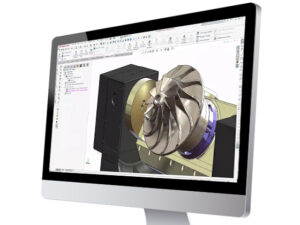In the realm of engineering and manufacturing, the advent of 3D printing technology has brought about a transformative revolution. Its potential to fabricate intricate designs, prototypes, and functional parts has reshaped traditional manufacturing processes. As higher education institutions strive to equip students with cutting-edge skills, integrating 3D printing into engineering and manufacturing programs stands as a fundamental imperative.

Hands-On Learning and Prototyping
One of the most significant advantages of integrating 3D printing into educational curricula is its ability to provide a hands-on learning experience. Students can conceptualize ideas, design prototypes, and witness their creations materialize in real-time. This tangible experience not only reinforces theoretical concepts but also fosters creativity and innovation by enabling students to test, iterate, and refine their designs until they achieve the desired outcome.
Bridging Theory with Application
By incorporating 3D printing, institutions bridge the gap between theoretical knowledge and practical application. Students grasp engineering principles by practically applying them in the creation of tangible objects. They learn to troubleshoot design flaws, optimize structures for strength and durability, and comprehend the intricacies of manufacturing processes – skills that are invaluable in the professional world.
Industry Relevance and Technological Advancement
The adoption of 3D printing in engineering and manufacturing industries is rapidly growing. Integrating this technology into educational programs ensures students are well-versed in the tools and techniques currently employed by industries. Familiarity with 3D printing technology enhances students’ employability and prepares them to tackle real-world challenges in innovative ways upon entering the workforce.
Interdisciplinary Collaboration
3D printing is not limited to engineering alone; its applications span across various disciplines, fostering interdisciplinary collaboration. Integrating this technology encourages interaction between engineering, design, medicine, and other fields. For instance, biomedical engineering students can use 3D printing to create prototypes of medical devices, fostering collaborations between engineering and healthcare professionals.
Sustainable Manufacturing and Design Thinking
Teaching 3D printing techniques encourages students to consider sustainability in manufacturing. Additive manufacturing, the process behind 3D printing, often generates less waste compared to traditional manufacturing methods. By promoting sustainable practices, institutions nurture environmentally conscious engineers who can incorporate eco-friendly approaches into their designs.
The integration of 3D printing technology into higher education engineering and manufacturing programs is not just an option but a necessity. It enriches the educational experience, fosters innovation, and prepares students to navigate a rapidly evolving technological landscape. Institutions that embrace this transformative technology equip their students with the skills and mindset needed to drive the future of engineering and manufacturing. As we move towards an era where innovation reigns supreme, the incorporation of 3D printing is an essential step towards shaping adept, forward-thinking engineers and manufacturers.
Learn more by visiting our website.
Share
Meet the Author

